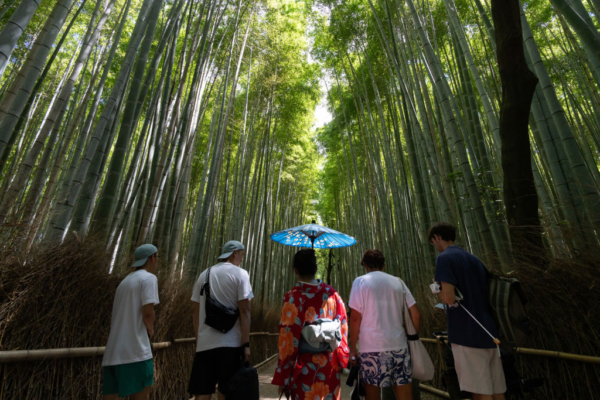Japan Airlines (JAL), recently announced that it will provide free domestic flights to international tourists traveling to any destination within Japan. This initiative aims to make it easier for foreign visitors to explore small towns and lesser-known tourist spots across the country. However, travel experts have cautioned that this move could exacerbate issues of overtourism in popular locations like Tokyo and Kyoto.
The offer of complimentary domestic flights from Japan Airlines is designed for international travelers who book both international and corresponding domestic flights with the airline within the same reservation. Booking standalone domestic flights with JAL does not qualify for the promotion.
This plan, unveiled in September, is applicable to travelers from the United States, Canada, Mexico, Thailand, Australia, New Zealand, Vietnam, the Philippines, Indonesia, India, China, and Taiwan heading to Japan.
A spokesperson for Japan Airlines stated that there is currently no set end date for this program.
Sara Aiko, the founder of the travel agency Curated Kyoto, told Business Insider that the initiative aims to disperse tourist crowds to lesser-known areas in order to alleviate the issues of overtourism in Tokyo.
However, Aiko mentioned that regardless of whether the airfares are free or not, visitors are likely to continue flocking to popular destinations such as Tokyo due to their appeal as major tourist attractions.
Japan welcomed a record-breaking 17.8 million visitors in the first half of this year, significantly surpassing pre-pandemic levels. On September 18, estimates from the Japan National Tourism Organization indicated a 36.0% increase in foreign visitors to Japan in August compared to the same period last year, totaling 2.933 million arrivals. The Japanese government projects that by 2025, the country will attract over 32 million international tourists.
Ben Julius, the founder of Tourist Japan, a travel agency offering tours across Japan to travelers worldwide, noted in an interview with Business Insider that approximately 90% of their clients opt for popular destinations like Tokyo, Kyoto, Mount Fuji, and Osaka.
“Most visitors are first-timers,” he said. “When people visit Japan for the first time, they want to experience the must-see cities.”
The influx of foreign tourists to popular tourist cities in Japan has severely affected the daily lives of locals, leading to increased hotel prices and issues stemming from inappropriate tourist behavior. Restaurants are often overwhelmed, struggling to accommodate the surge in foreign visitors.
In response, various regions in Japan have started implementing tourist taxes, setting visitor limits, and even restricting alcohol sales in an attempt to mitigate the impacts of excessive tourism.
Earlier this year, a resort town at the base of Mount Fuji erected barriers to deter throngs of tourists seeking to visit the iconic peak, as the influx of visitors had brought trash and traffic issues to the area.
Shogo Yonemitsu, who manages the “Tamatebako” seafood barbecue restaurant in the bustling shopping district of Shibuya in Tokyo, told CNN, “It is indeed challenging to cater to foreigners; it’s beyond our capacity.”
The weakened Japanese yen remains a significant factor driving foreign visitors to choose Japan as a travel destination. Since early 2022, the yen has depreciated by over 20% against the US dollar, hitting a new 38-year low of 161.96 yen to the dollar in July of this year. The yen has seen a slight rebound in recent times.
Duncan Greenfield-Turk, CEO of Global Travel Moments, informed Business Insider that Japan has been the top destination for bookings by their customers over the past three years.
He suggested that Japan Airlines’ initiative could potentially extend the economic benefits of mass tourism to less-visited regions. However, without proper guidance, he cautioned that it might only encourage more people to flock to already crowded areas, intensifying the issue of overtourism.

